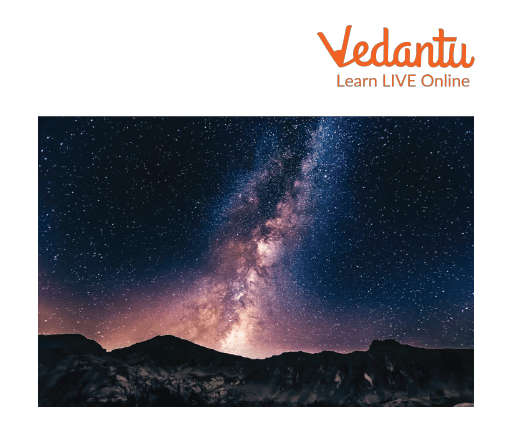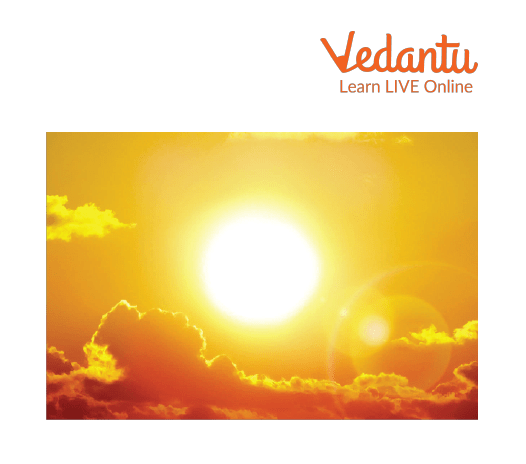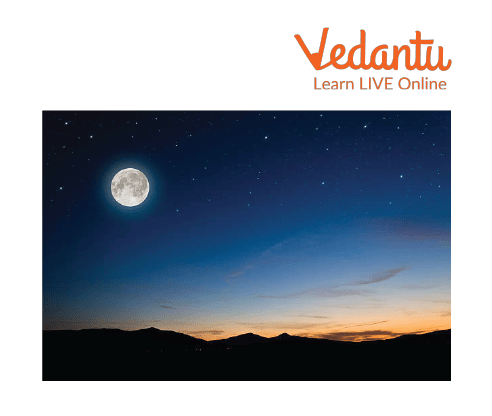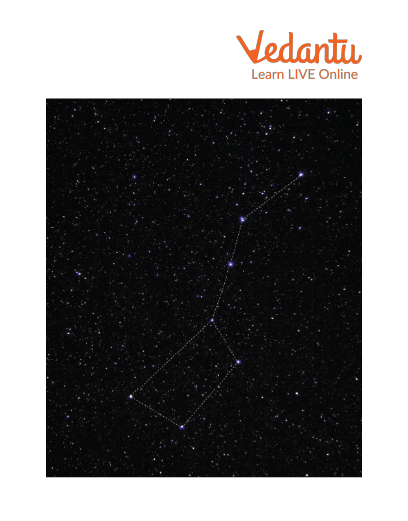




Universe Facts for Kids
What is the universe? The universe is a huge and endless expansion of millions and millions of stars with all the heavenly bodies. A large group or cluster of stars is called a galaxy, and the sun is also a part of it. How big is the universe? There are many galaxies in the universe. The sun, the moon and the earth are only a small part of a galaxy. The name of our galaxy is Akash Ganga or Milky Way. We live on one of the planets in the solar system, Earth.

Milky Way Galaxy as Seen From the Earth.
The Sun
The Sun is much bigger than the Earth in size. It rises in the east and sets in the west. It is a round, huge ball of fire, made up of hot burning gases. The Sun is very important to us. It gives us heat, light and energy. The energy from sun is called solar energy. This energy can be used for lighting, cooking, heating water, moving machines, cars, etc. We can generate solar energy by using solar panels.

At the Time of Sunrise.
The Moon
Some planets have one or much smaller companions or satellites. The Moon is also a celestial body in space and part of our Solar System. The only natural satellite of the earth is the Moon. It is smaller in size in comparison to the Earth. It moves around the Earth and completes one revolution in 28 days.
The Moon does not have its heat and light. It shines as it reflects the sun's light that falls on it. Two astronauts from the United States, Neil Armstrong and Edwin Aldrin, first landed on the Moon.

The Moon as Seen From the Earth.
The Solar System
The Sun, the planets, their satellites (moons) and asteroids (pieces of rocks and dust that move around the Sun in space) all together form the Solar System. The Sun is in the middle of our Solar System. All the planets with their satellites move or revolve around the Sun at different distances and speeds. They move in a fixed elliptical path called the orbit.
There are eight planets in our Solar System that move around the Sun. They are:
Mercury
Venus
Earth
Mars
Jupiter
Saturn
Uranus
Neptune
The word 'planet' means wanderer. The Earth is the third farthest planet from the Sun and the only planet that supports life. It is because it has air, water, soil and suitable temperature.
The Stars
At night, millions of stars twinkle in the sky. The stars are massive heavenly bodies, much bigger than our earth. They are very far away from us, so they look small in size. The stars are huge balls of hot, burning gases. They have their heat and light like the sun.
Therefore, they twinkle at night. Our sun is also a star. The brightest star is the Pole Star or Polaris (Dhruv Tara), which we can see in the northern direction. It never changes its direction.
There is another brightest star, i.e., Sirius or Dog Star, which we can see at night. We use a telescope to observe stars and celestial bodies in space and other distant objects from the earth.
Constellation
We can see many groups of stars in different patterns at night. These are called constellations. Ursa Major (the Great Bear) and Ursa Minor (the Little Bear) are such constellations.

Constellation
Solved Questions
1. What is a galaxy?
Ans: A large group or cluster of stars is called a galaxy, and the sun is also a part of it. There are many galaxies in the universe. The sun, the moon and the earth are only a small part of a galaxy.
2. What are constellations?
Ans: Many groups of stars are seen in different patterns at night. These are called constellations.
Summary
The universe is a huge and endless expansion having groups of millions of galaxies. The planets shine and reflect the sun's light. The name of our galaxy is Akash Ganga or Milky Way. Our Sun is the nearest star to our planet Earth. The energy we get from the Sun is called solar energy. All planets move around the sun in a fixed elliptical path called the 'orbit'.
Due to the presence of water, air, soil and suitable temperature, the earth supports life. The Moon does not have its light. constellations are many groups of stars that are seen in different patterns at night.
FAQs on Facts about the Universe for Kids
1. Why is Earth also called the "blue" planet?
Earth is also called the 'blue planet' because it looks blue when seen from space. It is because a major part of the Earth's surface is covered with water
The Earth.
2. How many minutes do sun rays take to reach the earth's surface?
It takes 8 minutes for sun rays take to reach the earth's surface
3. What is "Pluto"?
Earlier, Pluto was considered the ninth planet of the solar system. But, it has been categorised as a "Dwarf Planet".











